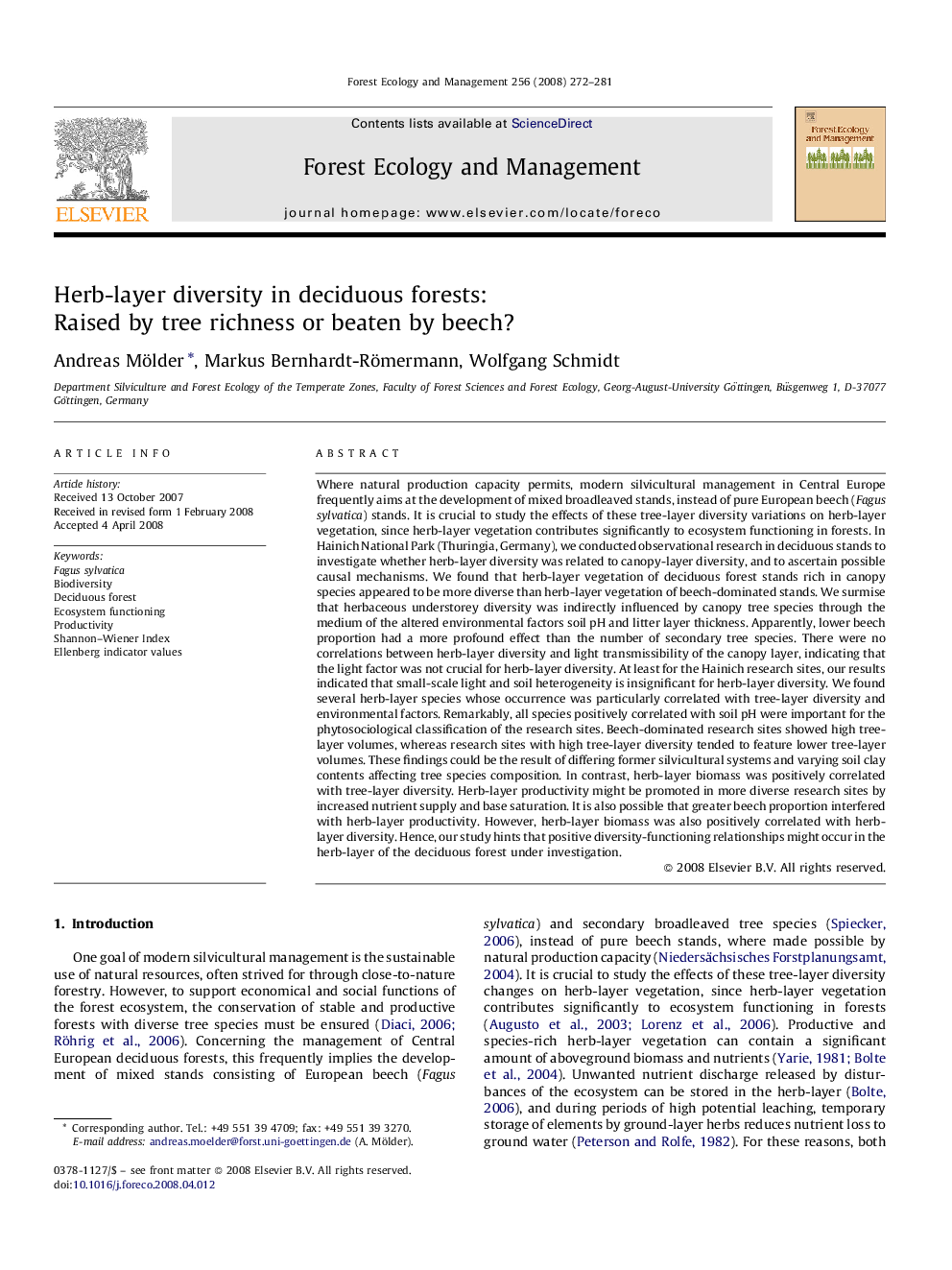| کد مقاله | کد نشریه | سال انتشار | مقاله انگلیسی | نسخه تمام متن |
|---|---|---|---|---|
| 88885 | 159325 | 2008 | 10 صفحه PDF | دانلود رایگان |

Where natural production capacity permits, modern silvicultural management in Central Europe frequently aims at the development of mixed broadleaved stands, instead of pure European beech (Fagus sylvatica) stands. It is crucial to study the effects of these tree-layer diversity variations on herb-layer vegetation, since herb-layer vegetation contributes significantly to ecosystem functioning in forests. In Hainich National Park (Thuringia, Germany), we conducted observational research in deciduous stands to investigate whether herb-layer diversity was related to canopy-layer diversity, and to ascertain possible causal mechanisms. We found that herb-layer vegetation of deciduous forest stands rich in canopy species appeared to be more diverse than herb-layer vegetation of beech-dominated stands. We surmise that herbaceous understorey diversity was indirectly influenced by canopy tree species through the medium of the altered environmental factors soil pH and litter layer thickness. Apparently, lower beech proportion had a more profound effect than the number of secondary tree species. There were no correlations between herb-layer diversity and light transmissibility of the canopy layer, indicating that the light factor was not crucial for herb-layer diversity. At least for the Hainich research sites, our results indicated that small-scale light and soil heterogeneity is insignificant for herb-layer diversity. We found several herb-layer species whose occurrence was particularly correlated with tree-layer diversity and environmental factors. Remarkably, all species positively correlated with soil pH were important for the phytosociological classification of the research sites. Beech-dominated research sites showed high tree-layer volumes, whereas research sites with high tree-layer diversity tended to feature lower tree-layer volumes. These findings could be the result of differing former silvicultural systems and varying soil clay contents affecting tree species composition. In contrast, herb-layer biomass was positively correlated with tree-layer diversity. Herb-layer productivity might be promoted in more diverse research sites by increased nutrient supply and base saturation. It is also possible that greater beech proportion interfered with herb-layer productivity. However, herb-layer biomass was also positively correlated with herb-layer diversity. Hence, our study hints that positive diversity-functioning relationships might occur in the herb-layer of the deciduous forest under investigation.
Journal: Forest Ecology and Management - Volume 256, Issue 3, 30 July 2008, Pages 272–281